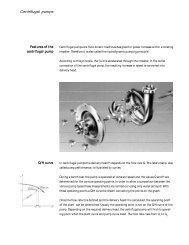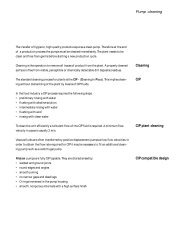FK 40 - Tri-Canada
FK 40 - Tri-Canada
FK 40 - Tri-Canada
You also want an ePaper? Increase the reach of your titles
YUMPU automatically turns print PDFs into web optimized ePapers that Google loves.
Positive<br />
displacement<br />
pumps<br />
Performance curve<br />
(only for water)<br />
Pump speed<br />
Viscosity<br />
Clearance losses<br />
With positive displacement pumps the flow rate Q is linear dependent on the pump speed n.<br />
On a test stand the flow rate is determined for various speeds and total head. In order to<br />
allow a comparison between the various pump designs and types, these tests are always<br />
carried out with water.<br />
Once the flow rate Q and the total head H have been determined, a pump speed n that<br />
corresponds to this operating point will result from the diagram.<br />
The positive displacement pump is usually operated with a fixed speed drive. The flow rate is<br />
constant.<br />
The flow rate can be adjusted to the various operating conditions by changing the pump<br />
speed.<br />
The viscosity of the product must be always taken into consideration for the design and<br />
selection of the pump type.<br />
Fluids with higher viscosities require more time to enter the displacement chamber. In those<br />
cases the pump speed must be adjusted accordingly to avoid cavitation which reduces the<br />
volumetric efficiency and increases the wear. A pump operating with cavitation creates a<br />
considerable noise level.<br />
Regardless of the low clearance between the rotor and the pump body, a slip from the<br />
pressure side back to the suction side will be generated when waterlike products are<br />
t ransf ered.<br />
In case of circumferential piston pumps the slip stops at a product viscosity of about<br />
200 mPa s and at about 500 mPa s in the case of rotary lobe pumps.



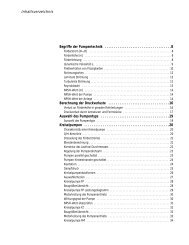

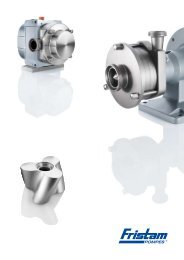
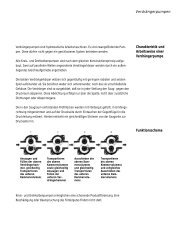
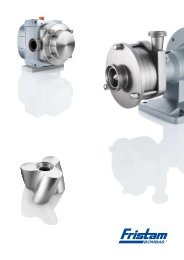
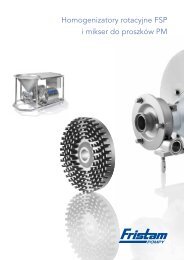

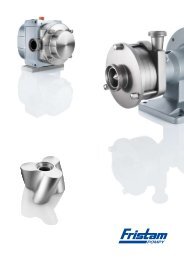
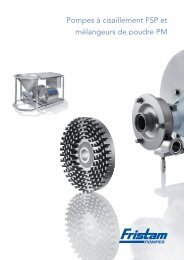
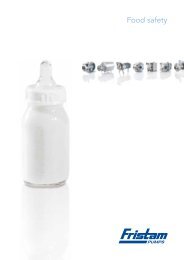
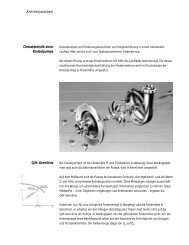
![Förderhöhe [m] - Fristam Pumpen F. Stamp KG](https://img.yumpu.com/2915008/1/190x245/forderhohe-m-fristam-pumpen-f-stamp-kg.jpg?quality=85)
